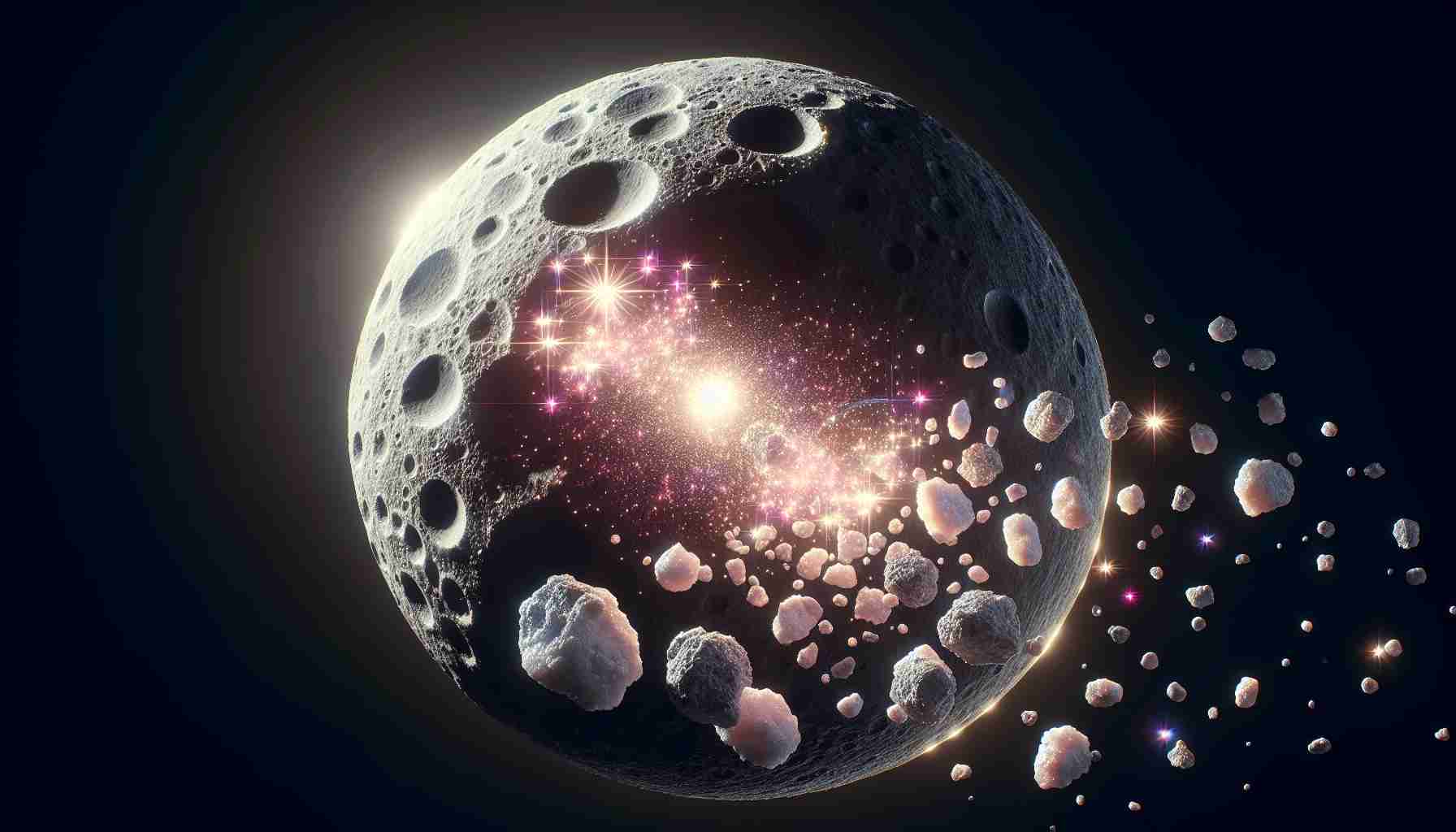- The Moon’s regolith, a layer of lunar dust, presents significant potential for space exploration.
- Ilmenite, a mineral prevalent on the Moon’s surface, offers a method to produce oxygen, vital for rocket fuel.
- The process involves extracting ilmenite, then reacting it with hydrogen at high temperatures to release oxygen as water vapor.
- This method also yields iron and titanium, additional valuable resources.
- Previous theoretical work is being actualized with engineered prototypes for upcoming NASA missions.
- This technique positions the Moon as a potential fuel stop for humanity’s journey to other parts of the cosmos.
- Exploration efforts may soon transform the Moon’s silent surface into a hub of spacefaring activity.
Imagine the Moon’s dusty surface, a vast desert of grey regolith under the star-speckled sky. This unassuming blanket of lunar dust, forged over eons by countless cosmic collisions, hides within it a goldmine of potential. As humanity plots its celestial ambitions, the Moon’s regolith may hold the key to unlocking new frontiers.
Though the dream of tapping into the Moon’s water reserves glimmers with promise, uncertainty shrouds their abundance and accessibility. Thus, the focus sharpens on an alternative: ilmenite. This mineral, a common inhabitant of the Moon’s surface, offers an intriguing opportunity to liberate oxygen—a crucial component for rocket fuel.
Years of scientific inquiry have laid the groundwork for what could be a revolutionary process. The concept involves harvesting regolith and refining it to extract ilmenite. Once purified, this mineral would undergo a transformation alongside hydrogen at searing temperatures. The meeting of these elements performs a delicate dance, culminating in the release of oxygen as water vapor, and leaving behind iron and titanium, potential treasures in their own right.
Crucially, this isn’t just theory. Pioneers in space exploration once sketched the outlines of this process on paper, and now engineers mold it into metallic prototypes. A daring ambition envisions these prototypes marking history with their lunar presence on upcoming NASA missions.
As we contemplate our future among the stars, one thing becomes clear: the Moon, far more than a passive satellite, might just be humanity’s next fuel stop on the way to exploring the cosmos. Its dusty surface, once silent, could soon echo with the activities of spacefaring endeavors. The secret to achieving our extraterrestrial dreams might lie beneath our very feet—or, rather, under the lunar dust.
The Moon’s Dusty Treasure: Ilmenite Extraction and Future Space Exploration
How-To Steps & Life Hacks: Harnessing Lunar Ilmenite
To extract oxygen from lunar regolith, particularly targeting ilmenite, follow these outlined steps:
1. Site Assessment and Mining: Use advanced remote sensing technology to identify ilmenite-rich regions on the Moon. Employ robotic mining equipment to collect regolith.
2. Regolith Transportation: Transport the collected regolith to an on-site processing facility, possibly using automated systems to conserve human resources.
3. Regolith Processing: Employ a gravity separation process to concentrate ilmenite from the regolith.
4. Chemical Transformation: Subject ilmenite to reduction using hydrogen at temperatures exceeding 1,000°C, which reacts with ilmenite to produce water vapor, iron, and titanium.
5. Oxygen Capture: Electrolyze the generated water vapor to separate oxygen. Store the oxygen for future use in habitats or rocket fuel.
Real-World Use Cases: Lunar Industries
1. Fuel Production: Generated oxygen combined with hydrogen can create rocket fuel, enabling Moon-based refueling stations for deeper space exploration missions.
2. Manufacturing: Iron and titanium left after the oxygen extraction could support in-situ lunar manufacturing for construction materials.
3. Life Support: The produced oxygen could support life support systems in lunar habitats, reducing dependency on Earth supplies.
Market Forecasts & Industry Trends
The space economy is set to reach over $1 trillion by 2040, according to McKinsey. The commercial interest in exploiting the Moon’s resources suggests that technologies for ilmenite extraction will see significant growth, especially as companies like SpaceX and Blue Origin advance in their lunar ambitions.
Reviews & Comparisons
Pros of Lunar Mining:
– Reduces resource transportation costs from Earth.
– Enhances long-term extraterrestrial settlement feasibility.
Cons:
– High initial technology development and deployment costs.
– Significant risks due to unknown environmental hazards on the Moon.
Security & Sustainability
Security Concerns:
– Developing technology must ensure radiation protection for any human presence.
– Establish cybersecurity measures for autonomous systems controlling mining and processing operations.
Sustainability Strategies:
– Ensure minimal environmental impact on the Moon.
– Develop reusable technology to support circular resource economy in space.
Insights & Predictions
With increasing interest and international investment in lunar exploration, expect partnerships between government space agencies and private companies to drive innovations in lunar mining and resource utilization over the next two decades.
Tutorials & Compatibility
Current prototypes indicate compatibility with various lunar landers and habitats being designed by NASA and private enterprises. Training programs for astronauts focusing on remote operations and equipment handling will be integral.
Pros & Cons Overview
– Pros: Advancing technology could enable sustainable space exploration. Potential for breakthrough scientific discoveries in material science.
– Cons: Requires substantial investment and risk. Current technology still in early development phases.
Actionable Recommendations
– Stay informed about developments from key players like NASA and SpaceX.
– If interested in the sector, pursue studies in space engineering or materials science.
– Watch for investment opportunities in companies leading in lunar exploration technologies.
For further exploration into the Moon’s potential resources and to keep up with the latest in space technology, visit NASA and SpaceX.
